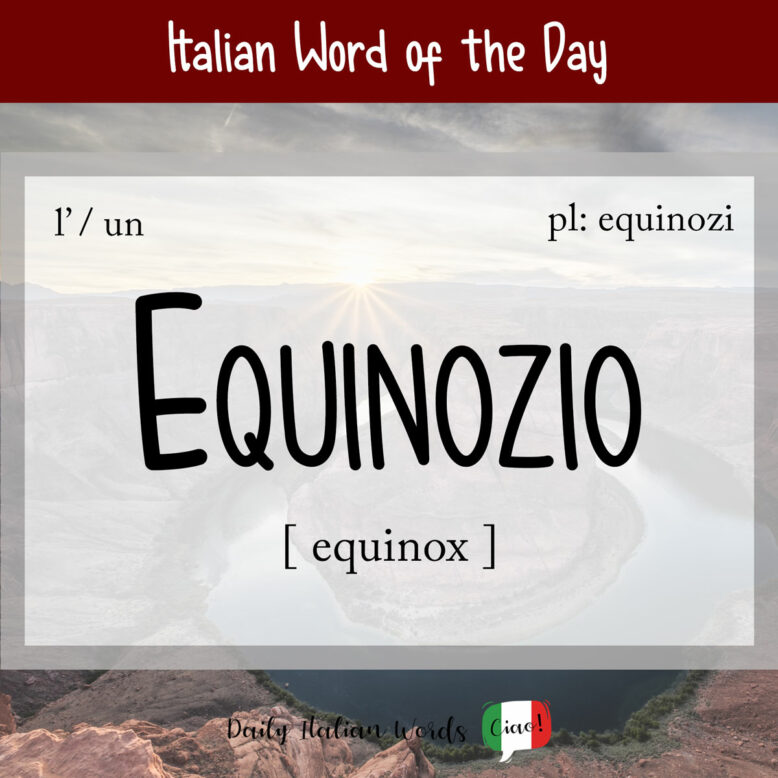Even if you know little to no Italian, it doesn’t take a great leap of the imagination to figure out that equinozio means equinox. Both words refer to the biannual date at which the sun crosses the celestial equator, resulting in a day and night of approximately equal length all over the planet.

It derives from the Latin aequinoctium, a compilation of aequus (equal) and nox noctis (night).
Being a masculine noun that starts with a vowel, it takes the following definite and indefinite articles:
- l’equinozio = the equinox
- gli equinozi = the equinoxes
- un equinozio = an equinox
- (degli) equinozi = (some) equinoxes
As mentioned above, the equinox occurs twice a year: once in the spring around March 20th (il 20 marzo) and once in the fall around September 23rd (il 23 settembre).
L’equinozio non cade sempre nello stesso giorno.
The equinox doesn’t always fall on the same day.
The former is known as the spring or vernal equinox (equinozio di primavera in Italian) while the latter goes by the name of the autumnal or fall equinox (equinozio d’autunno in Italian).
Note that leap years (anni bisestili) and other factors cause the dates to vary by a small margin. Indeed, the spring equinox can occur as early as March 19th or as late as March 21st, while the fall equinox can fall anytime between September 21st and 24th.
Heather Broster is a graduate with honours in linguistics from the University of Western Ontario. She is an aspiring polyglot, proficient in English and Italian, as well as Japanese, Welsh, and French to varying degrees of fluency. Originally from Toronto, Heather has resided in various countries, notably Italy for a period of six years. Her primary focus lies in the fields of language acquisition, education, and bilingual instruction.


